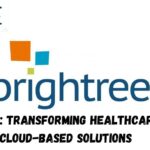Introduction of ECASALS
As society and, in general, the whole world is developing at a high pace, the accessibility of scientific and educational information is more important than ever. The ECASALS therefore stands as a major drive to ensure that there exists the European Charter for Access to Scientific and Learning Services for researchers, students, and the community. In this article, it will be crucial to define what exactly ECASALS is, what it aims at, and why its use is vital for the further advancement of open education and research.
What is ECASALS?
It, short for the European Charter for Access to Scientific and Learning Services, is a set of rules that were put to guarantee equal access to scientific work and educational materials throughout Europe. It promotes public access to information so that users from diverse fields can access the numerous resources in academic and research institutions. No matter whether it is a university, research laboratory, or library, ECASALS also contributes to dismantling the barriers to acquiring knowledge.
Objectives of ECASALS
Nevertheless, the main goal of ECASALS is to give easy and non–exploitative access to scientific and educational services. Here are some of the key objectives of the charter:
- Equitable Access: Providing equal opportunities regardless of ethnic origin, color, or location regarding educational and scientific information.
- Open Science: Supporting the initiative of Open Science, which implies the availability of research and data to the public.
- Collaboration and Sharing: Facilitating the convergence between institutions and sharing a common pool of input to avoid aggregation of similar research endeavors.
- Sustainability: Guaranteeing that the educational and research services are effective in providing services for possible future generations of students and researchers.
Who Benefits from ECASALS?
The ECASALS framework benefits a wide range of stakeholders, including:
Researchers: Researchers and scholars get updated information wherein they can perform their research work efficiently.
Students: All students from the primary, secondary, and tertiary levels can have access to good-quality learning aids.
Public: Members of the general public also benefit from ECASALS as it promotes transparency in science and education, allowing more people to learn from publicly funded research.
Why is ECASALS Important?
It is significant for several reasons. First, it overcomes the conventional limitations of access to scientific and educational information. Earlier, most of these resources were paid and only a few people with good money or institutional support could get it. In this vein, with it, the ability to explore developments and engage in learning and research is opened up to a wider population thus increasing the pool of citizens informed by knowledge and research.
Furthermore, ECASALS
Acts in favor of, the Open Science agenda, a long-term effort that tries to make the scientific process in the world free and accessible to the public. It states that data and research findings will be made freely available to avoid repeat attempts and work towards international cooperation.
In this part, we are discovering how ECASALS boosts digital learning.
That is why, thanks to the constantly increasing requirement for digital materials, It is an essential factor in online learning. The use of digital platforms is convenient as it provides the student, and other researchers with an opportunity to gain materials from any part of the world. ECASALS in its work provides information on different online libraries, civil and educational databases, and necessary tools that contribute to the learners’ capacity to find what they need at the right time.
Challenges Facing ECASALS
Despite its many benefits, ECASALS faces several challenges. One major hurdle is the resistance from some institutions that still prefer to keep their research and data behind paywalls. Another challenge is the sustainability of open-access models. While it’s ideal to offer free resources, funding these initiatives can be difficult. Additionally, ensuring that these resources are of high quality and remain up-to-date is a constant struggle.
The Future of ECASALS
The future of ECASALS looks promising as more institutions embrace open science and digital learning. Policymakers across Europe are pushing for more transparent and accessible research, and it plays a vital role in this movement. As more educational institutions recognize the value of sharing resources, the charter will continue to grow in importance.
Conclusion
European Charter for Access to Scientific. Learning Services is very useful for making use of open access to science and learning services. It makes sure that the knowledge is distributed fairly and wears out artificial distinctions. Those are out there that make societies less enlightened. Thus, when moving more and more into the digital era. Projects such as ECASALS become crucial for learning and researching on an international level.
FAQs
What does ECASALS stand for?
ECASALS stands for the European Charter for Access to Scientific and Learning Services.
Who benefits from ECASALS?
Researchers, students, and the general public benefit from it by gaining access to open educational and scientific resources.
How does ECASALS promote open science?
It promotes open science by encouraging the free sharing of research and educational materials.
What are the challenges facing ECASALS?
Key challenges include resistance from institutions and the sustainability of open-access models.
Is ECASALS available outside of Europe?
While primarily focused on Europe, the principles of It can inspire similar initiatives globally.











2 thoughts on “ECASALS: Exploring the European Charter for Access to Scientific”